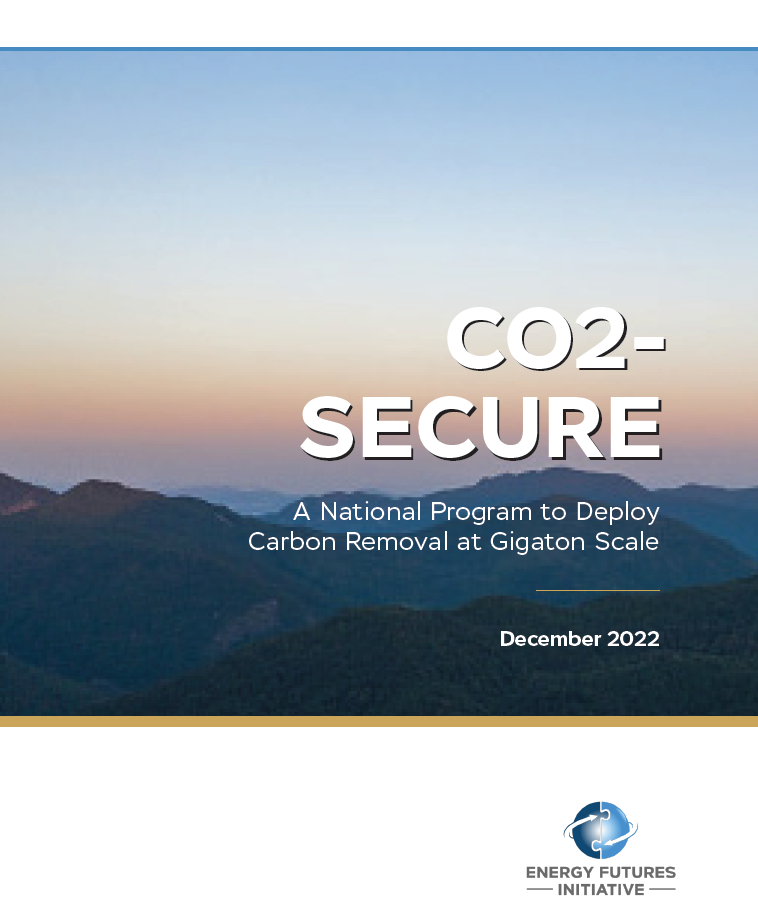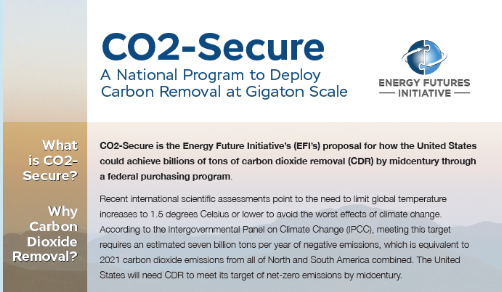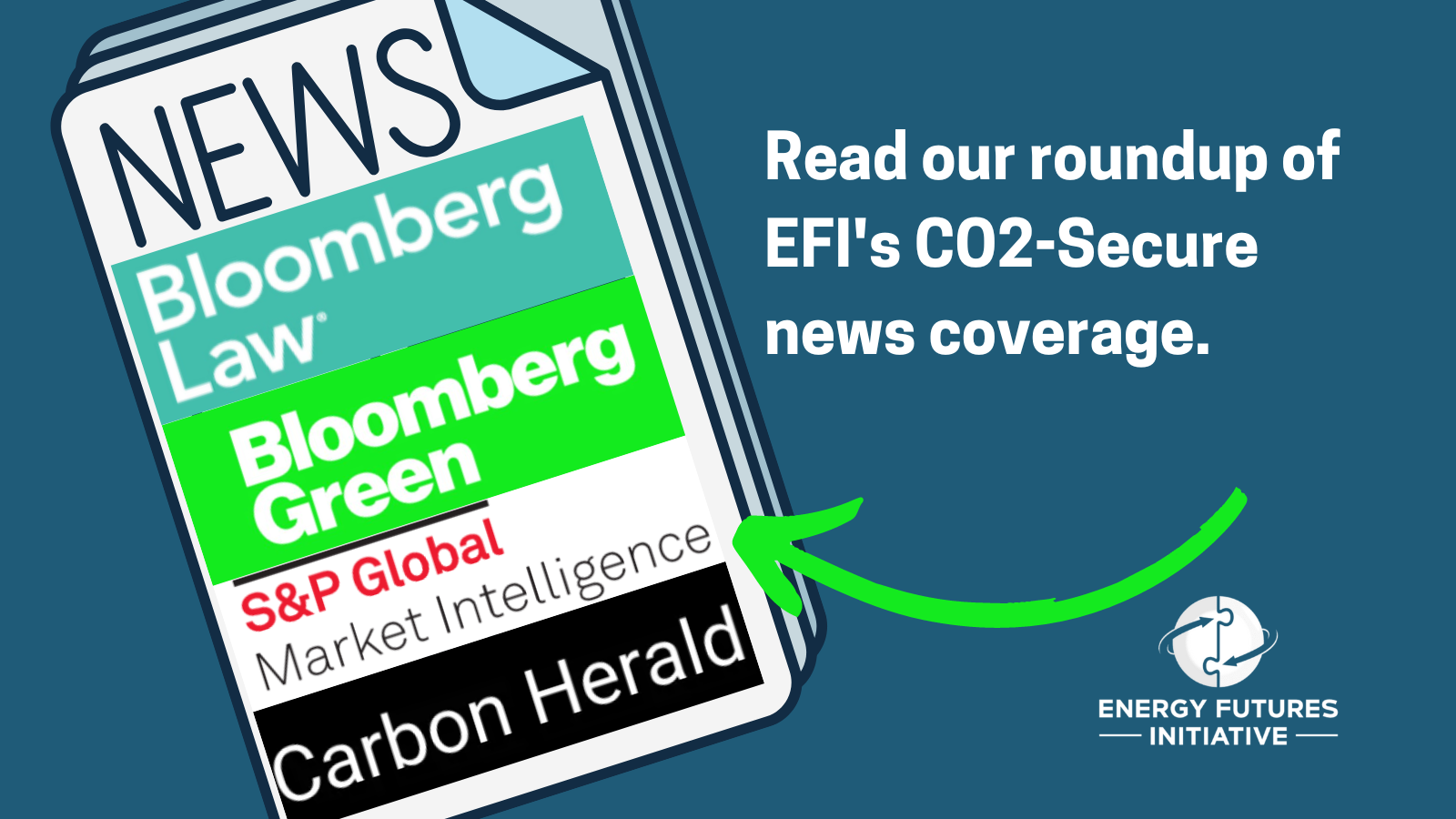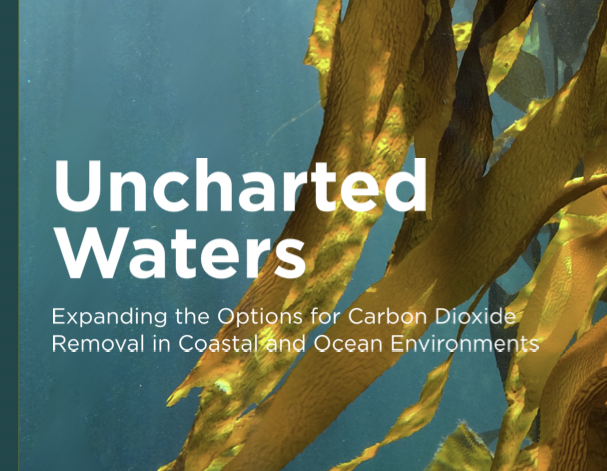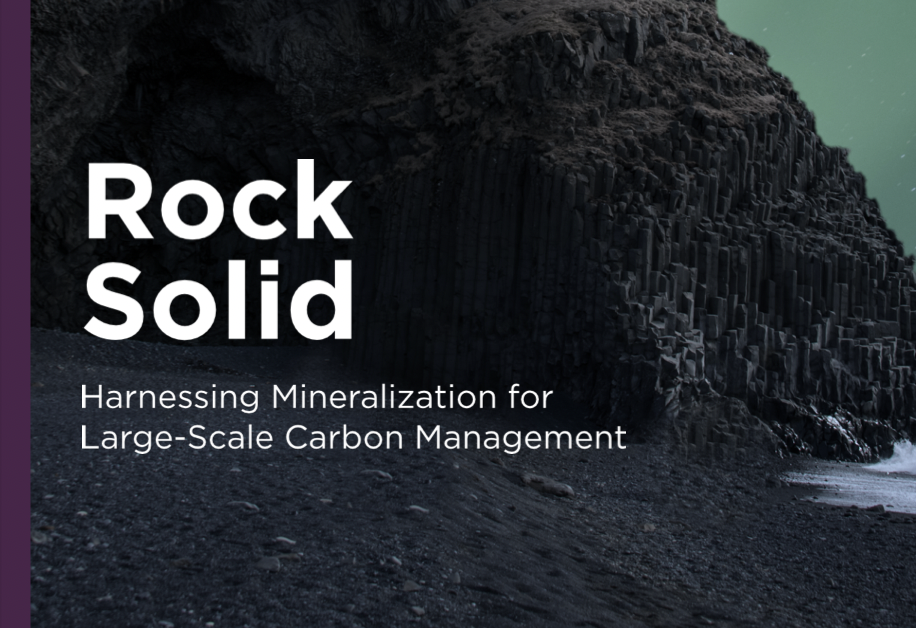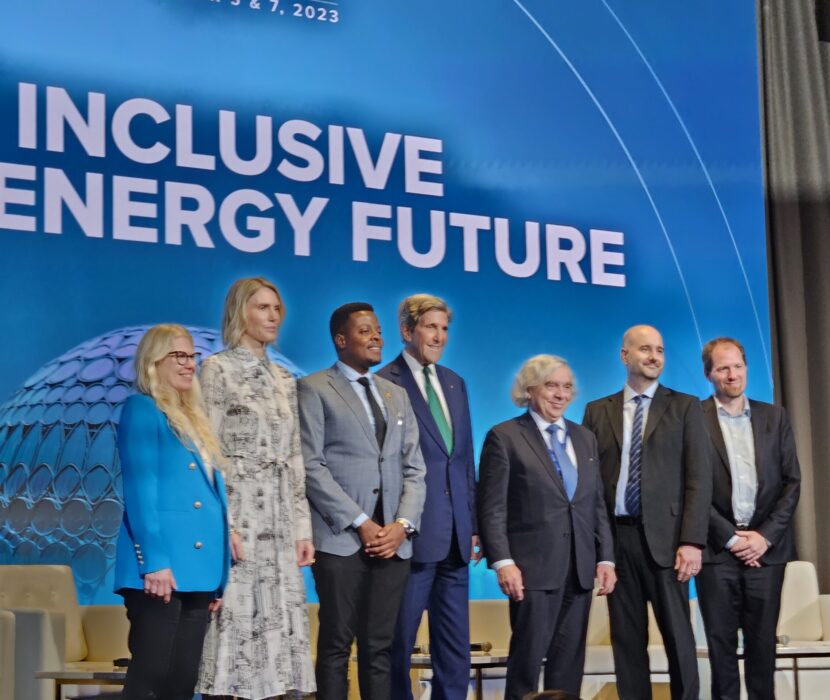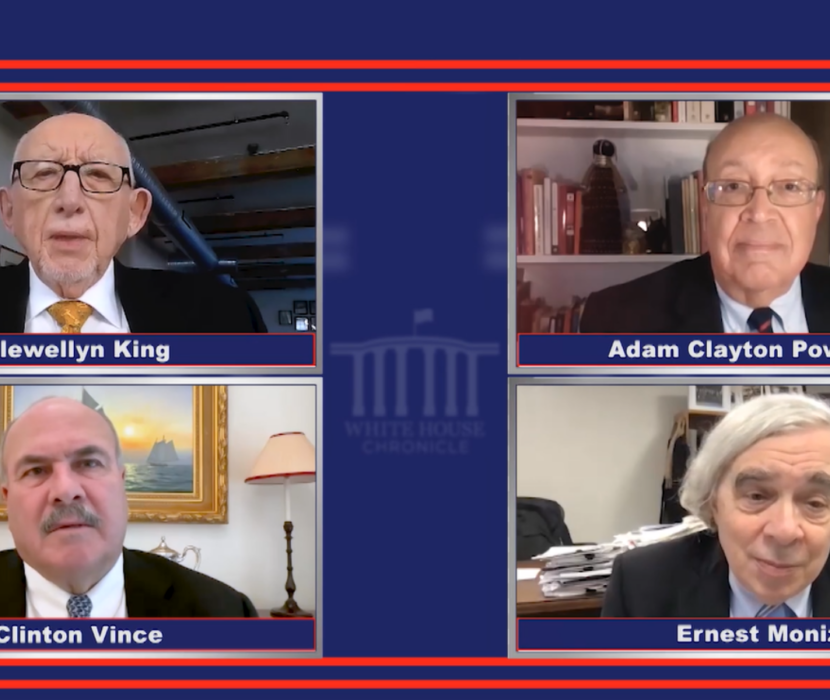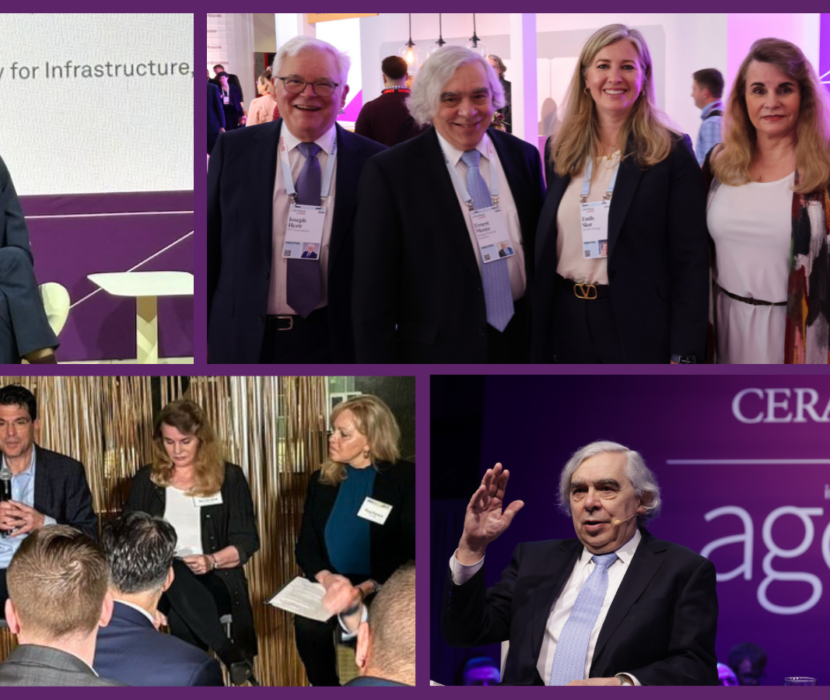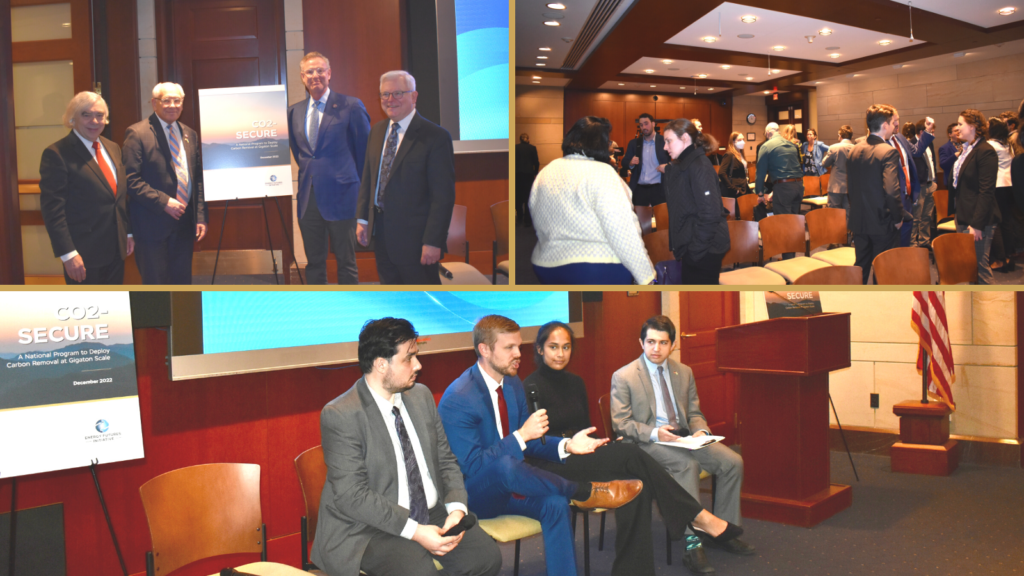
According to the Intergovernmental Panel on Climate Change, the scale of carbon removal needed is going to be billions of tons annually, which is on the same order of magnitude to North and South America’s 2021 carbon dioxide (CO2) emissions combined.
Many private sector entities have created voluntary carbon dioxide removal (CDR) projects to achieve net-zero CO2 emissions, and Congress has supported CDR in recent years through legislation, including the Inflation Reduction Act and the Bipartisan Infrastructure Law. However, these public and private sector CDR efforts would only remove thousands-to-millions of tons of CO2 each year—far short from the billions of tons required.
The Energy Futures Initiative (EFI) has determined it will be necessary to treat CDR as a public good and establish a federal program for large-scale carbon removal to remove those billions of tons of carbon annually.
To kick off a broader conversation on how a federal program like this could be implemented, EFI published a report (CO2-Secure: A National Program to Deploy Carbon Removal at Gigaton Scale) and held a report roll out event on December 8, 2022, headlined by EFI CEO (and former Energy Secretary) Ernest Moniz, Representative Paul Tonko (D-NY-20), and Representative Scott Peters (D-CA-52). EFI’s Joe Hezir, Tim Steeves, and Sam Savitz also participated, along with ClearPath’s Savita Bowman and Bipartisan Policy Center’s Danny Broberg.
A federal carbon purchasing program—called “CO2-Secure”—could go into effect in 2035, following a pilot precursor program such as those proposed in the Federal Carbon Dioxide Removal Leadership Act (S.4280, H.R. 7434) or the Carbon Removal Emissions and Storage Technologies (CREST) Act (S. 4420, H.R. 9318). The Federal Carbon Dioxide Removal Leadership Act, introduced by Senator Chris Coons (D-DE) and Rep. Tonko, would establish a CDR program and set a per ton carbon removal price ceiling that lowers over time. The CREST Act, introduced by Senator Susan Collins (R-ME) and Rep. Peters, would use least-cost pathways to create a CDR purchasing program.
Moniz argued that it is important to get serious about passing CDR legislation now because reducing global warming even incrementally will affect people’s lives.
“We have to fight for every…tenth of a degree that we can get,” Moniz said.
However, Moniz also quoted a line from EFI Board Chair Lord John Browne’s op-ed about the 27th Annual Conference of the Parties to underscore that with future CDR legislation, the perfect should not be the enemy of the good.
“Pragmatism executed at speed is better than perfection delivered too late,” he said.
Like Moniz, Rep. Tonko—who cosponsored the Federal Carbon Removal Leadership Act—emphasized that we needed to pass CDR legislation now to be prepared to engage in mass-scale removals in another decade or two.
“If we do not start to develop what we will need for that last 10 percent of decarbonization today, [these technologies] will not be ready when we really need them to be at-scale in the 2030s and ‘40s,” Rep. Tonko said.
As we at EFI developed and refined our CO2-Secure concept this year, we briefed members of Congress, including Rep. Tonko, Rep. Peters, Senator Coons, Senator Sheldon Whitehouse (D-RI), and other lawmakers active in CDR efforts.
“While a federal carbon removal procurement bill is unlikely to pass in the short term, we should be building our coalition now so that we are ready when the political window of opportunity opens,” Rep. Peters said in his introductory remarks at the report roll-out.
CDR as a public good
After remarks from Moniz, Rep. Tonko, and Rep. Peters, EFI Principal Joe Hezir fleshed out the details on EFI’s CO2-Secure proposal. “We need to recognize that climate remediation provides a public good benefit, not unlike other environmental or natural resources benefits,” Hezir said.
Hezir said that the main value of CDR is its long-term climate benefits, but since current markets do not value those benefits adequately, market forces alone will likely not be enough to achieve large-scale development and deployment of CDR technologies. However, a long-term program—like CO2-Secure—could use the concept of CDR as a public good meriting public sector investment to create demand for carbon removal services.
In the panel discussion that followed, Savita Bowman, program manager at ClearPath, talked about how the government has done this before—most recently with COVID-19 vaccines and back in the 1970s with solar panels: “Both of these examples helped create an initial market for a product that would not have developed otherwise,” she said. “The federal government’s involvement in scaling up this technology is a powerful signal to the market to send the idea out there that there is a buyer ready if the suppliers can meet that.”
Future, bipartisan CDR legislation
With control of the Senate and House of Representatives divided between Democrats and Republicans in the incoming 118th Congress, some panelists felt it would be difficult to pass the legislation that would establish this pilot program now. But they also felt that creating momentum would pay off later.
Yet, other panelists still expressed optimism that progress could be made, especially given Congress’s track record in the last few years.
“I would offer that Congress has almost already authorized and appropriated some carbon procurement efforts in the past two years,” said Danny Broberg, senior policy analyst at the Bipartisan Policy Center. “Congress has already done this before, and we can do it again. What we’re talking about here is obviously broadening to all forms of carbon removal.”
Progress on that front is looking bright, as a small pilot program was included in a recent draft of the upcoming omnibus bill.
Georgia Lyon, Communications Associate
Supplemental Material
Related Content
(Share this post with others.)


